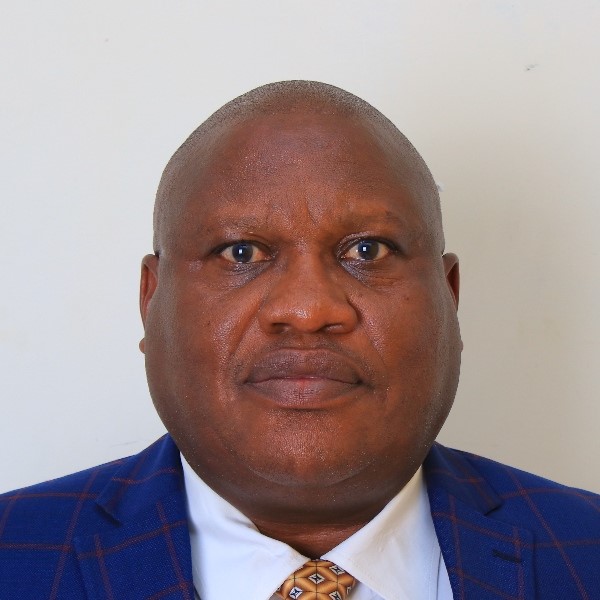Introduction
AATF is a not-for-profit African led technology- transfer organization that provides farmers in Sub-Saharan Africa (SSA) with practical technology solutions to overcome farm productivity constraints. Founded in 2003, AATF is driven by the vision of a prosperous, resilient, food and nutrition-secure Africa, where smallholder farmers’ livelihoods are transformed through agricultural innovations.
AATF Head Office Construction Project
AATF plans to construct its Headquarters in Nairobi. The management would like to engage a qualified Individual Consultant(s)/Consultancy Firms to the role of Project Manager to manage the construction project.
In any large-scale construction project, the role of the Project Manager is critical to the project’s overall success. Engaging a professional consultancy firm with specialized expertise in architecture, quantity surveying (QS), and construction management ensures that the project is executed with the highest level of technical competence and managerial oversight. In line with industry’s best practices, the Project Manager acts as the central point of coordination, responsible for managing every aspect of the project, from the design phase through to final handover. This role encompasses not only technical and operational responsibilities but also the critical task of maintaining clear communication between all stakeholders.
The consultancy firm, serving as the Project Manager, will oversee the day-to-day execution of the project, ensuring that milestones are met within the agreed timelines, budgets are adhered to, and quality standards are maintained. Their duties extend across several domains, including:
1. Design Coordination:
Ensuring that architectural designs are accurately interpreted and executed while collaborating with engineers and QS to ensure structural integrity, cost control, and material selection.
2. Construction Management:
Overseeing the on-site management of contractors and subcontractors, ensuring compliance with contractual agreements, safety regulations, and industry standards. They will also ensure that the project progresses smoothly, addressing any delays or risks as they arise.
3. Budget Control and Quantity Surveying (QS):
Maintaining strict oversight of project costs, ensuring that the construction budget is effectively managed. The firm will use QS expertise to monitor expenditure, manage change orders, and ensure value for money is achieved without compromising on quality.
4. Risk Management:
Identifying, assessing, and mitigating project risks is essential for ensuring timely project completion. The Project Manager will continuously evaluate potential risks, from supply chain disruptions to on-site safety concerns, and develop mitigation strategies in collaboration with the Secretariat and Board Special Committee.
5. Compliance and Quality Assurance:
Ensuring that all project activities comply with local regulations, industry standards, and contractual obligations. Quality assurance processes will be embedded into the project’s lifecycle, ensuring that construction quality is consistently monitored and maintained.
6. Reporting and Communication:
The Project Manager will provide regular progress reports to both the Secretariat and the Board Special Committee. This includes detailed updates on milestones, budget utilization, risk assessments, and any challenges that may require high-level interventions. Clear and continuous communication ensures that both committees are informed, enabling timely decision-making. The Project Manager’s role is central to maintaining the project’s momentum while ensuring alignment with strategic goals. By leveraging their technical expertise and industry experience, the consultancy firm will ensure that all technical and managerial aspects are handled with precision and professionalism, ultimately delivering a project that meets AATF’s standards of excellence.
For Accountability, the Project Manager will report directly to the Secretariat Committee about day-to-day operational decisions and to the Board Special Committee for strategic oversight and major approvals. This dual-reporting structure ensures a balanced approach to governance, operational efficiency, and accountability, reinforcing the project’s overall success.
1. Project Initiation
The Project Manager is responsible for assessing the feasibility of the project and managing the recruitment of key professionals necessary for successful project execution. This includes clearly defining roles, setting up project planning, and supervising all implementation activities in
accordance with agreed timelines, budgets, and quality standards. The project team will consist of the following professionals:
- Project Architect: Responsible for design, layout, and ensuring the building’s aesthetic and functional requirements are met.
- Quantity Surveyor (QS): Oversees cost planning, budget management, and financial control throughout the project lifecycle.
- Structural Engineer: Ensures the structural integrity and stability of the building.
- Electrical Engineer: Designs and managing the installation of electrical systems.
- Mechanical Engineer: Oversees mechanical systems such as HVAC, plumbing, and ventilation.
- Interior Designer: Responsible for the internal layout, finishes, and functionality of interior spaces.
- Landscape Architect: Designs external spaces around the building, ensuring proper integration with the site and surroundings.
2. Project Feasibility and Scheme Design
At this stage, the Project Manager plays a critical role in evaluating the project’s feasibility and managing the appointment of key consultants such as the Architect, Quantity Surveyor, and Structural Engineer. The tasks involved include:
| Item | Description |
| Client’s Brief | Engage with the client to discuss their requirements, including timelines, financial constraints, and key objectives. Provide recommendations on how to proceed with the project. |
| Site Information | Collect and analyze all relevant site details, such as ownership, boundaries, services, rights of way, zoning laws, licenses, and permits required for the project. |
| Site Visit | Conduct a thorough appraisal of the project site, considering factors like location, size, access to utilities, environmental impact, regulatory compliance, soil type, and orientation. |
| Consultants | Advise on additional required consultants and define their roles, such as QS, Civil Engineers, and Structural Engineers. |
| Feasibility | Conduct an in-depth feasibility study, assessing the financial, technical, legal, and operational viability of the project. Review alternative designs, construction methods, and their cost implications with the client. |
| Presentation Plans & 3D Models | Prepare design plans and 3D models that reflect the client’s brief, statutory requirements, and local regulations. |
| Outline Costs | Collaborate with the QS to estimate the initial project costs, offering insight into budget implications. |
3. Submission of Drawings to County
At this stage, the Project Manager will coordinate with the appointed Architect and Structural Engineer to submit all necessary drawings to the local authority for approval. This ensures compliance with local building regulations and laws.
| Item | Description |
| Approval Requirements | Advise on and ensure compliance with all local building regulations and approvals required by relevant authorities. |
| Submission Drawings (Architectural) | Oversee the preparation and submission of all architectural drawings, including plans, sections, and elevations, to the local authority for approval. |
| Submission Drawings (Structural) | Coordinate the preparation and submission of structural drawings by the Structural Engineer, ensuring they meet legal and safety standards. |
| Submission & Follow- up | Submit and monitor the progress of the approval process, addressing any queries from the authorities and ensuring the timely issuance of permits and approvals. |
4. Detailed Design and Tender Action
Once all required approvals have been secured, the Project Manager will manage the tendering process to select a qualified contractor. This involves finalizing detailed designs, creating a comprehensive Bill of Quantities (BoQ), and issuing construction specifications.
| Item | Description |
| Specifications & Drawings | Collaborate with consultants (Architect, QS, Engineers) to review and finalize drawings and technical specifications. Obtain quotes for specialized work. |
| Construction Detail Drawings | Provide detailed construction information, including material specifications and installation instructions, to aid the tendering process. |
| Contract & Contractors | Advise on contract types (e.g., lump sum, cost-plus), and identify potential contractors, subcontractors, and suppliers for the project. |
| Tender Process | Prepare a list of approved contractors, invite tenders, and review the submissions. Provide the client with recommendations based on technical and financial merit. |
| Award | Recommend the best contractor for the project based on their tender submission and oversee the awarding of the contract. |
5. Construction Supervision
The Project Manager plays a pivotal role in supervising the construction phase, ensuring that all aspects of the project are delivered according to the approved timeline, budget, and quality standards. The Project Manager will also be responsible for coordination between the client, consultants, and contractors to ensure smooth project execution.
| Item | Description |
| Contractor Appointment | Advise the client on selecting and appointing the main contractor, ensuring roles and responsibilities are clearly defined. |
| Building Contract | Prepare and manage the contract signing process, ensuring all parties agree to the terms before construction begins. |
| Site Handover | Facilitate the official handover of the construction site to the appointed contractor, ensuring all necessary documentation and permits are in place. |
| Contract Administration | Oversee the management of the construction contract, ensuring that all work is carried out according to the contract terms. This includes supervision, issuing of certificates, and quality control. |
| Site Visits | Conduct regular site visits to inspect progress, ensure adherence to quality standards, and address any arising issues on site. |
| Cost Controls | Provide periodic financial reports, working with the QS to monitor construction costs, and assess the financial implications of any changes or variations. |
| Completion of Works | Oversee the contract close-out process, including final inspections, snag lists, and ensuring any defects are remedied. Administer final completion certificates. |
| Maintenance | Provide guidance on building maintenance, ensuring long-term durability and operational efficiency. |
| As Built Drawings | Prepare and provide the client with as-built drawings detailing the final construction, including main drainage, electrical, and service installations. |
6. Post-Construction
Post-construction, the Project Manager will work with the client to establish a framework for building operations, maintenance, and tenant management, ensuring that the project continues to deliver value after its completion.
| Item | Description |
| Building Services Setup | Assist in establishing operational procedures for building services such as HVAC, electrical, plumbing, and security. Ensure that all systems are fully functional and integrated. |
| Maintenance Plan | Develop a detailed maintenance plan for all building systems, ensuring that regular inspections, servicing, and repairs are scheduled and documented. |
| Lease Management | Support the client in developing and negotiating lease agreements for tenants, ensuring that terms are aligned with the client’s operational and financial goals. |
| Post-Occupancy Evaluation | Conduct a post-occupancy evaluation to assess the building’s performance in terms of energy efficiency, functionality, and occupant satisfaction. |
This comprehensive approach ensures that the construction project is managed efficiently from start to finish, with clear roles, responsibilities, and accountability measures in place. By following these structured steps, AATF and its project stakeholders can expect successful project execution, adherence to budget and timelines, and quality outcomes in all phases of the project.
7. Application Requirements
Interested Individual consultants/consultancy firms are expected to submit the following:
A. Technical Proposal (Not more than 30 Pages excluding annexes/attachments)
- Clear work plan and timelines supported by a Project Gantt chart.
- Proof of experience in handling similar projects by providing a list of past and present clients for which the consultant/firm conducted similar projects.
- Indicate years of experience in the field of construction. (Over 10 years of experience will be an added advantage).
- Submit names of the lead team and support team, with their CVs, academic, professional certificates and functional responsibilities of the key people to be engaged.
- Submit at least three Certificates of completion/recommendation letters from previous most recent clients and include contract information.
- Company Profile.
- Applicable statutory documents to construction projects e.g., valid NCA certificates, tax compliance certificate, Registration Certificate, CR12 etc.
- Any other information to support your proposal.
B. Financial Proposal (Not more than 10 Pages)
- Budget should be clearly broken down and justified including estimated days of working, and expenses related to every phase.
- Be comprehensive and inclusive of all applicable taxes.
- Clear cost structure for Project Management.
- Indicate terms and conditions of payment.
8. Application Submission:
Interested applicants should send their proposal (Technical and Financial) together with other supporting documents to the Procurement Office through procurement@aatf-africa.org by COB 3rd January 2024 with the subject head “HOC PROJECT MANAGER”.
9. Terms and conditions of the proposal
AATF reserves the right to request new or additional information regarding each service provider and any individual or other persons associated with its project proposal. AATF reserves the right not to make any appointment from the proposals submitted.
Service providers shall not make available or disclose details pertaining to their Project proposal with anyone not specifically involved, unless authorized to do so by AATF. Service providers shall not issue any press release or other public announcement pertaining to details of their project proposal without prior written approval.
AATF Service providers are required to declare any conflict of interest they may have in the transaction for which the tender is submitted or any potential conflict of interest. AATF reserves the right not to consider further any proposal where such a conflict of interest exists or where such potential conflict of interest may arise.
10. Confidentiality statement
All data and information received from AATF for the purpose of this assignment are to be treated confidential and are only to be used in connection with the execution of these Terms of Reference. All intellectual property rights arising from the execution of these Terms of Reference are assigned to AATF.


















































































